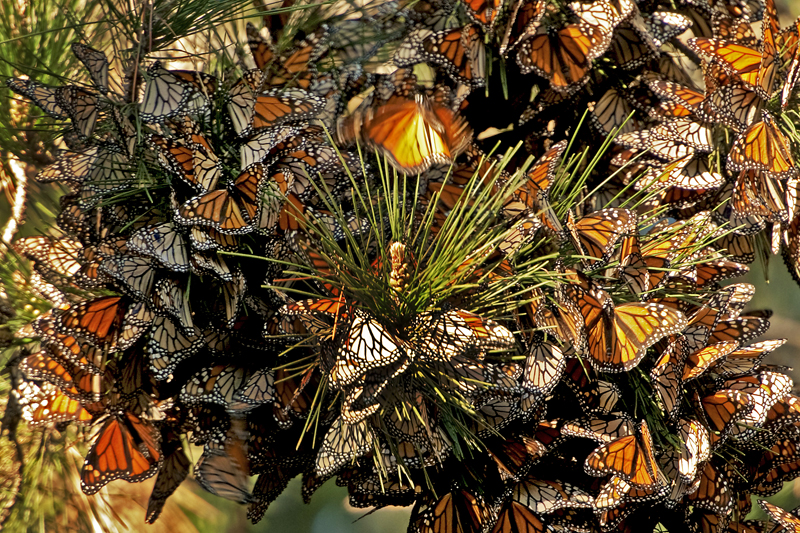
As man creates cities, builds roads, and drains
marshes we must set aside refuges for wild creatures.
Rachel Carson
Glorious spring has arrived in North America. After spending the winter hunkered down on evergreens in central Mexico and coastal California, monarch butterflies are taking to the airways and heading north, as they have for eons. Successive generations will relay across Mexico, the U.S., and finally Canada by early autumn. In the process each generation completes its life cycle (egg, larva, pupa, adult) in 40 days or so, then dies, passing the baton to the next group of newly emerged adults, which then flies further northward.
Then, almost magically, fading light and chilling air announces the fall. Leaves begin to turn, and every monarch butterfly does an about face and heads south to flee the winter, fluttering thousands of miles to roost in the same evergreen forests, often in the same trees, as their ancestors. And here's the clincher-these butterflies are three to four generations removed from those that departed Mexico and southern California six months earlier. And that's not all. This lone generation is not limited to a 40 day lifespan, and will survive, not only the southbound flight of up to 3,000 miles, but six months of winter torpor, PLUS two months of the return north. It is during this northward journey that they mate to jump start the whole cycle again. Truly one of nature's epic performances. And not a scientist anywhere has a clue how they do it.
But everyone's favorite insect is in serious trouble. Monarch butterfly populations in eastern North America have plummeted by 90% in the past two decades, from historical highs of one billion in 1995 to 30 million in 2014. But this iconic butterfly's popularity just might save it. People are taking notice, including those at the U.S. Fish and Wildlife Service who are reviewing a petition to list the monarch as an endangered species. And there's more. An unprecedented "Tres Amigos" summit convened President Obama, Mexican President Nieto, and Canadian Prime Minister Harper last year in Toluca, Mexico to consider the plight of the monarch butterfly. The White House subsequently called a meeting of scientists and conservationists to discuss declining pollinators, focusing on bees and monarchs. Sixty groups, government and private, were represented and charged with creating a federal strategy to deal with the crisis. And U.S. Fish and Wildlife and the National Wildlife Federation signed a historic agreement to collaborate on behalf of monarch butterfly conservation. But will it be enough? (next photo)